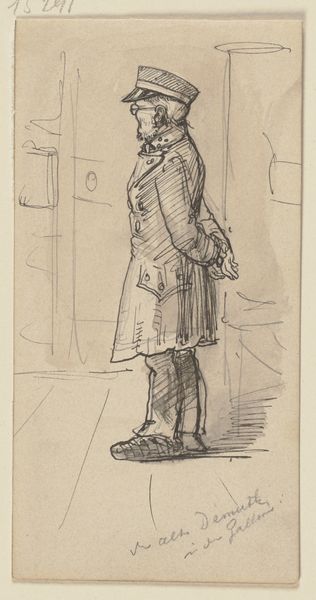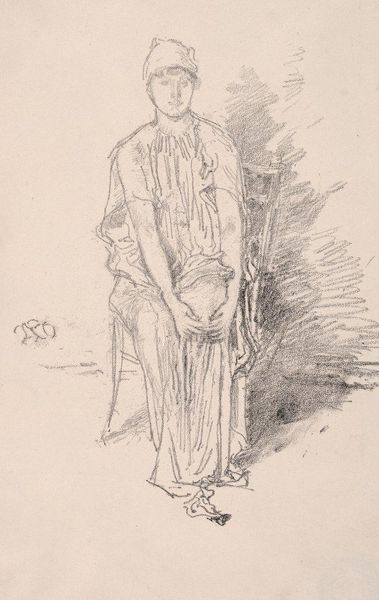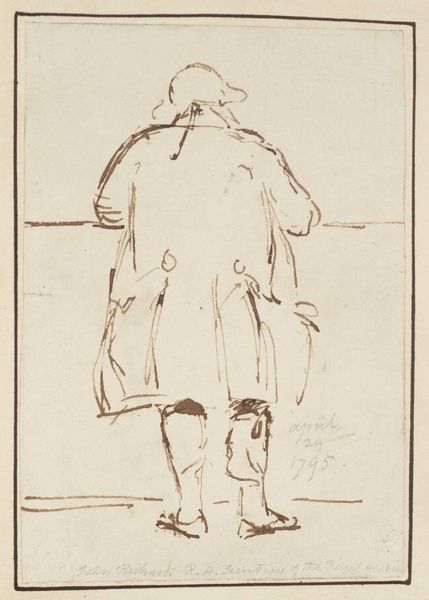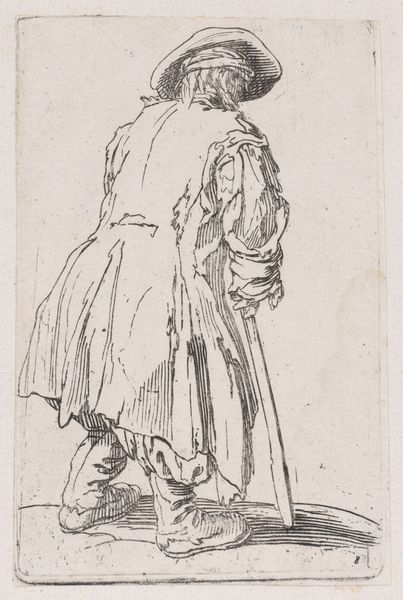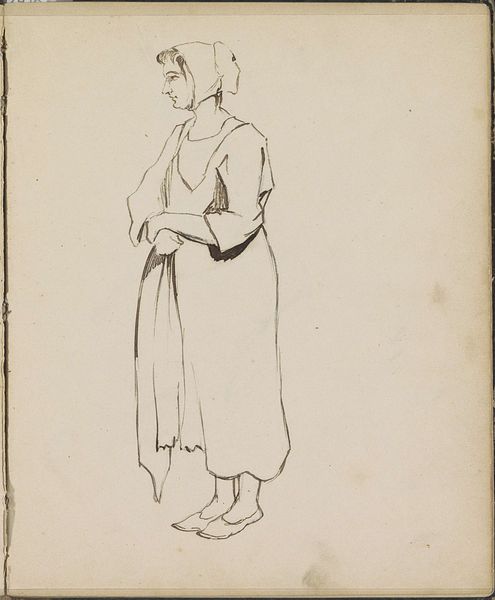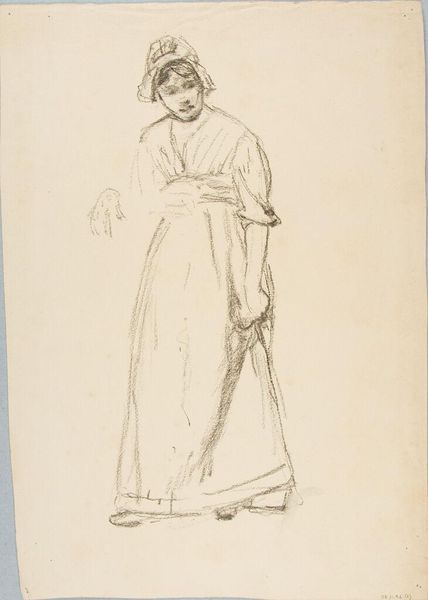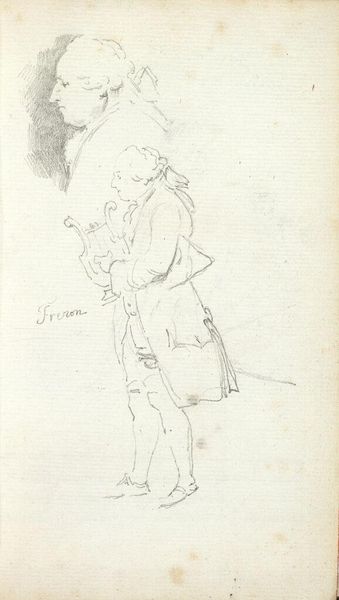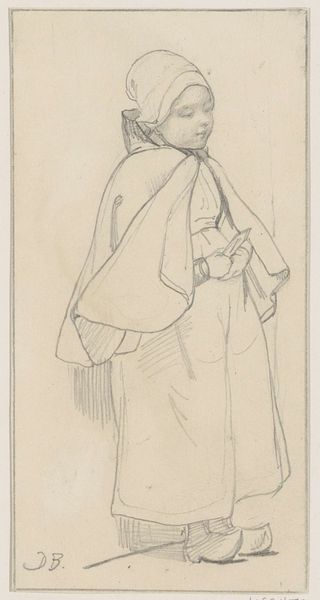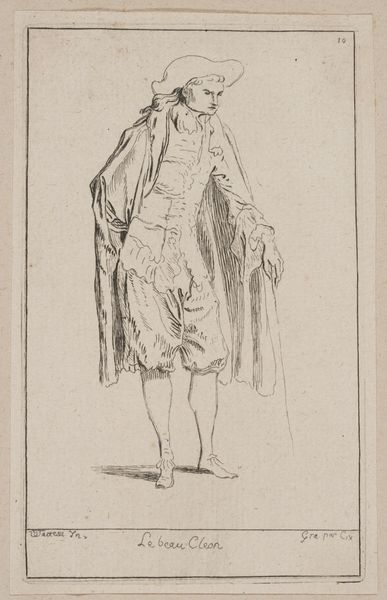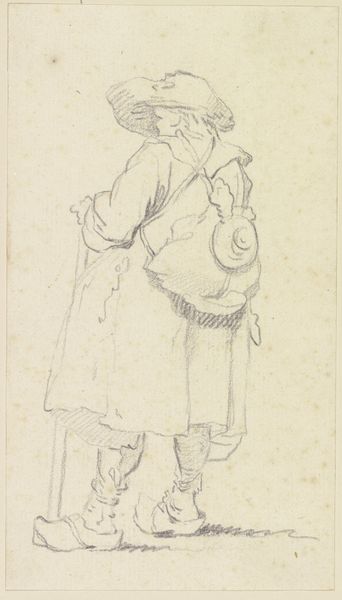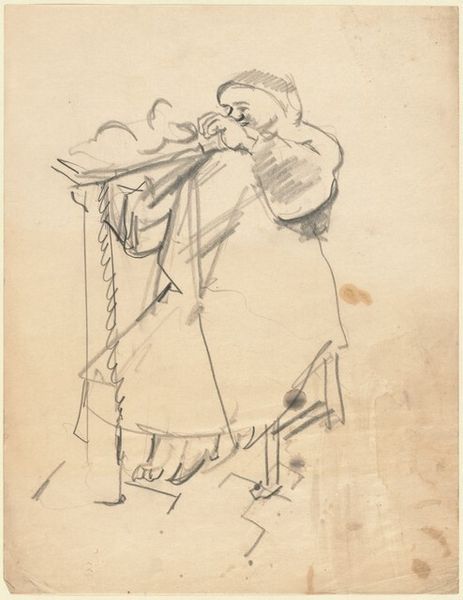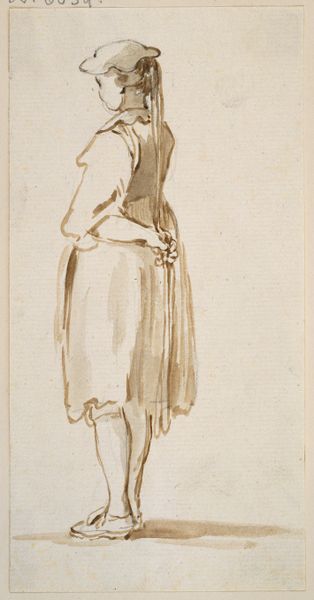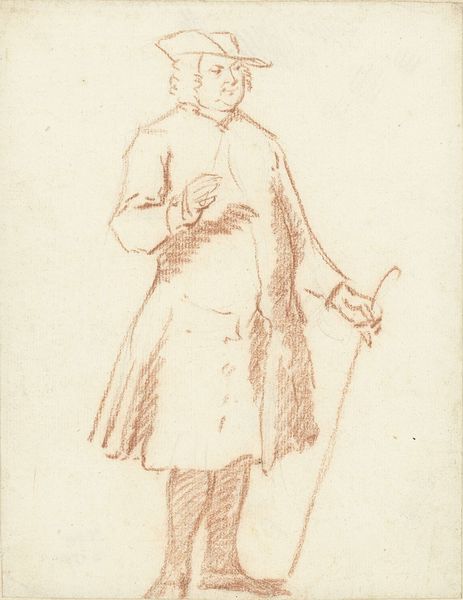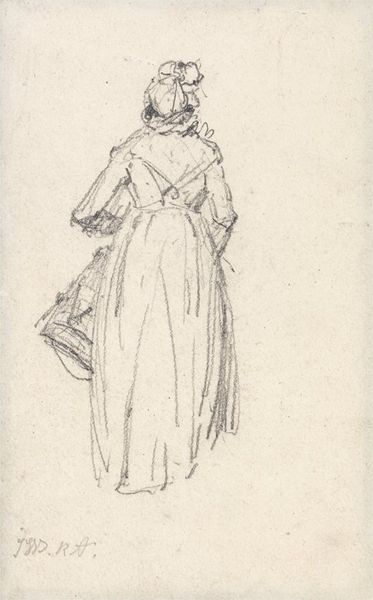
drawing, pencil
#
portrait
#
drawing
#
toned paper
#
16_19th-century
#
quirky sketch
#
dutch-golden-age
#
sketch book
#
personal sketchbook
#
idea generation sketch
#
sketchwork
#
pencil
#
sketchbook drawing
#
genre-painting
#
storyboard and sketchbook work
#
sketchbook art
#
realism
#
initial sketch
Dimensions: height 147 mm, width 88 mm
Copyright: Rijks Museum: Open Domain
Curator: Looking at this sketch, one immediately senses a private moment, almost voyeuristic, don't you think? The subtle grays of the pencil on toned paper really lend to that intimate, personal atmosphere. Editor: Absolutely, it feels like a quick glance into someone's life. The Rijksmuseum houses this drawing by David Bles, dating from between 1831 and 1898, titled "Standing Man Viewing a Painting on the Wall." It's intriguing because it’s essentially a genre scene within a portrait—art looking at art, which comments on public display and taste at the time. Curator: It’s interesting how the sketch captures the man in quiet contemplation. His posture with the cane hints at status, but also a sense of weariness, as if he is carrying the weight of social expectations, almost mirroring the solemn painted figure looking back at him. It begs the question of how images dictate roles. Editor: The drawing exemplifies Realism's attention to everyday life. Beyond that, I consider this sketch as a sign of emerging cultural institutions, like the museum itself! The public increasingly encountered art, and drawings like this capture that budding relationship, showing the quiet participation in creating cultural knowledge. Curator: That is a brilliant point. What is compelling is also the image within the image—it could be argued the man in the painting is like a symbolic father figure whose values or perhaps expectations are being considered by our real life beholder. Does he feel affirmed, challenged, intimidated? We are drawn into pondering his inner dialogue with tradition. Editor: Indeed, it opens up so much speculation about how historical representation affects individual identity. Consider how such a sketch would function today; with photography or other media. Our engagement as an audience certainly shifts with modes of presentation. Curator: This little sketch reminds me that visual expression across generations is linked, our memories often framed through the imagery that surrounds us, regardless of medium. It reflects how portraiture has long been a conversation on value and permanence, translated here in brief and graceful strokes. Editor: Yes, Bles captured something significant by showing the seemingly insignificant: a man simply looking at a picture. Ultimately, that gesture carries profound historical weight and speaks to how we create a sense of shared culture.
Comments
No comments
Be the first to comment and join the conversation on the ultimate creative platform.
